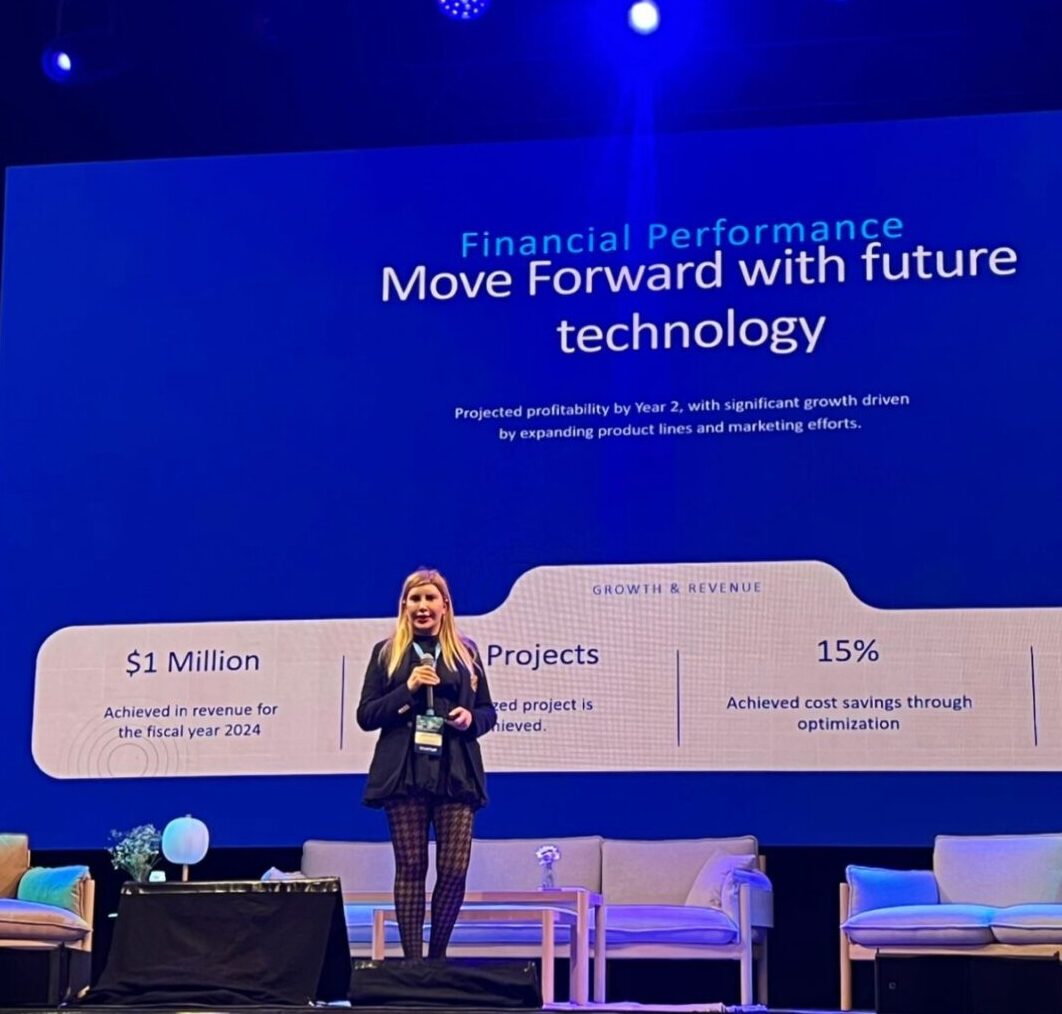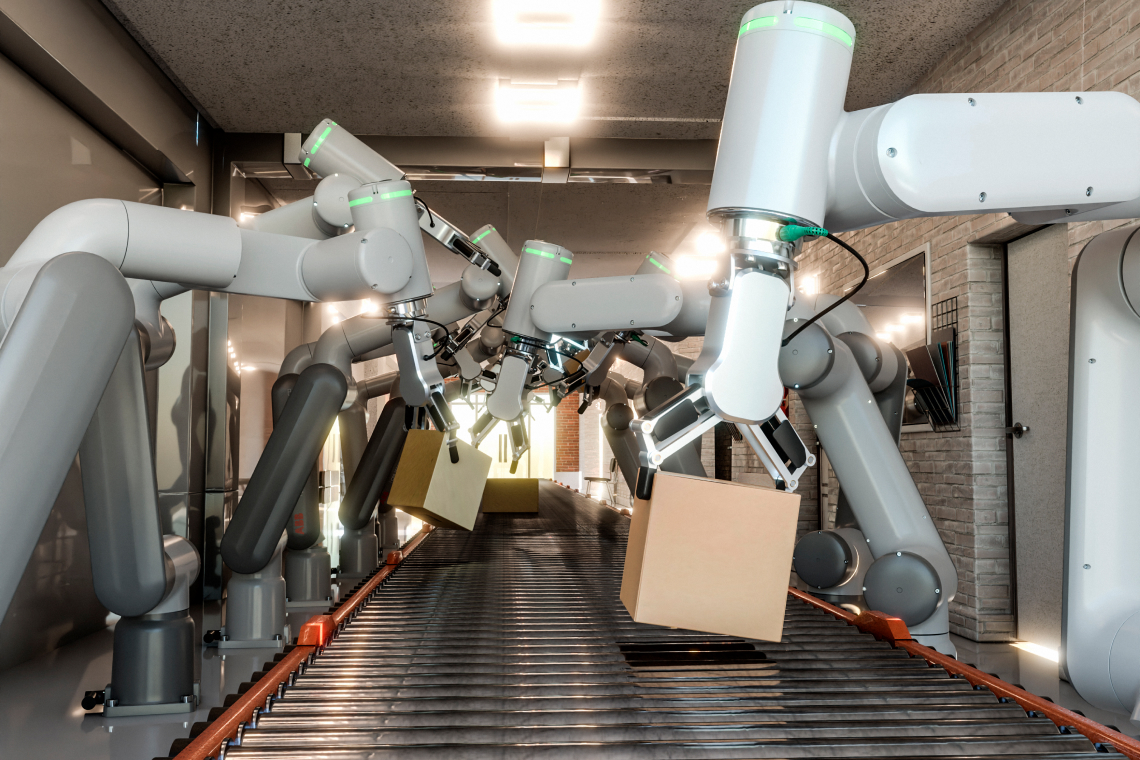Articulated robots are an indispensable part of modern robot automation systems. These robot systems are characterized by their flexible structure that mimics the movements of the human arm. Different types of robot systems include Delta Robot and SCARA Robot. Articulated robots, which are an important part of robot automation systems, revolutionize industrial production by accelerating production processes and increasing productivity.
As Nilus Engineering, in this article, we will explore what articulated robots are, their history and usage areas, in which sectors these robot systems benefit and some important examples. If you are ready, let’s take an exciting journey into the world of robot systems!
What is an Articulated Robot?
An articulated robot is an advanced robot system consisting of interconnected moving parts. These robot systems have a structure similar to the human arm. Flexibility and precision are the most important features of articulated robots.
Articulated robots usually consist of a base, shoulder, elbow and wrist-like structures. These structures allow the robot to move in multiple directions. Thus, they can easily fulfill even complex tasks.
Articulated robots, which have an important place in robot systems, have programmable features. In this way, they can be quickly adapted for different tasks. Their ability to make precise movements makes them ideal for industrial applications.
The working area of articulated robots is quite wide. They can perform many tasks, from assembling small parts to handling heavy loads. This versatility makes them indispensable for many different industries.
As one of the cornerstones of robot automation systems, articulated robots optimize production processes. They offer safe and effective solutions where manpower is insufficient or dangerous.
Articulated robots also lead to an increase in production quality thanks to their ability to work with high speed and precision. By minimizing human error, they ensure consistency in product quality.
These robot systems are usually designed with six or seven axes. This multi-axis structure gives robots a wide range of motion. Thus, they can easily perform even complex tasks.
Articulated robots play an important role in smart factories in the industry 4.0 era. Their ability to integrate with other automation systems makes them an indispensable part of the production facilities of the future.
History of Articulated Robots
The history of articulated robots dates back to the late 1950s. The first articulated robot was developed by George Devol and Joseph Engelberger in 1959. This robot was called the Unimate and became the pioneer of industrial robots.
Articulated robots, which started to be used in General Motors factories in the 1960s, revolutionized the automotive industry. These robots, which were especially useful in welding and assembly processes, led to a great increase in production efficiency.
In the 1970s, the SCARA Robot was developed. This type of robot was specifically designed for use in assembly work. SCARA robots attracted attention with their fast and precise movements.
The emergence of delta robots dates back to the 1980s. Known for its parallel structure, the delta robot is ideal for high-speed applications. It is widely used especially in the packaging industry.
Robot automation systems have continued to develop rapidly since the 1990s. Articulated robots have become smarter, faster and more flexible. Today, these robot systems, integrated with artificial intelligence and machine learning technologies, are now an indispensable part of industry.
In the 2000s, the use of articulated robots has expanded even further. Not only in industrial applications, but also in medicine, space exploration and even in the arts.
Just ten years later, collaborative robots (cobots) emerged. These robots attracted attention with their ability to share the same workspace with humans. Safety sensors made it possible for industrial robots to have close contact with humans.
What are Articulated Robots Used for?
Articulated robots are used for a wide variety of purposes in industrial production. The areas where articulated robots are most frequently used in industrial robot automation systems can be listed as follows:
⦁ Assembly Procedures
⦁ Welding Processes
⦁ Packaging and Palletizing
⦁ Painting and Coating
⦁ Quality Control
⦁ Logistics and Transportation
Assembly Operations
One of the most common uses of articulated robots is in assembly processes. Thanks to their precise and fast movements, they can easily assemble even small parts.
Welding Operations
Welding processes are another area where the articulated robot is specialized. Especially in the automotive industry, they are frequently used for welding vehicle bodies. They safely perform welding operations that are difficult or dangerous for humans to perform.
Packaging and Palletizing
Especially fast-moving articulated robot models, such as the delta robot, offer an ideal solution for packaging and palletizing operations. It packs and stacks products quickly and precisely.
Painting and Coating
The articulated robot improves product quality by ensuring a smooth and homogeneous coating. It can easily reach even places where the human hand cannot reach.
Logistics and Transportation
Articulated robots, which are included in robot automation systems, are also used in material handling and machine feeding processes. They can safely lift and carry heavy loads and feed production lines.
Quality Control
The articulated robot can also be used in quality control. Equipped with high-precision sensors, these robots can detect even the smallest defects in products.
Which Industries Benefit from Articulated Robots?
Just as there are many fields that benefit from the fast-moving capacities of articulated robots, there are also many sectors that benefit from this type of robots. The sectors that benefit from these robots can be summarized as follows:
⦁ Automotive Industry
⦁ Electronic Industry
⦁ Food Sector
⦁ Aviation Sector
⦁ Logistics Sector
⦁ Medical Sector
Automotive Sector
Articulated robots, which are frequently used in the automotive industry, increase production speed and quality by playing a role in many stages such as vehicle assembly, welding processes and painting.
Electronics Industry
The articulated robot, which is also frequently used in the electronics industry, plays an important role in assembling small electronic components that require precise assembly.
Food Sector
Fast articulated robots such as Delta Robot and SCARA Robot are especially preferred in the food industry. These robots, which play a role especially in the packaging and palletizing stage of the food industry, provide great benefit in ensuring consistency in quality.
Aviation Industry
In the aerospace industry, articulated robots are utilized in operations that require high precision. These precision operations include the assembly and control of aircraft parts.
Medical Sector
In the medical sector, especially in areas such as pharmaceutical production and laboratory automation, these special robots that can work in sterile environments are frequently used.
Logistics Sector
In the logistics industry, an articulated robot has an important place in processes such as material handling and placement, increasing the efficiency of the warehouse and reducing human errors.
Articulated Robot Examples
In the world of industrial robots, there is a wide range of articulated robots. Each designed specifically for specific tasks and sectors, these robots stand out with their different features and capabilities. Articulated robots include various types of robots such as SCARA Robot, Delta Robot and 6-axis robots. This diversity makes it possible to offer solutions suitable for the needs of different industries.
These robots, which are indispensable parts of robot automation systems, also differ according to manufacturers. Leading brands such as KUKA, ABB, Fanuc, Yaskawa are present in the robot market with their own special designs. Each brand offers different models according to their own specialties and technological innovations. Let’s take a closer look at these various examples of articulated robots and examine the unique features of each.
KUKA KR QUANTEC
It is an example of a powerful articulated robot designed for industrial applications. It attracts attention with its high payload capacity and large working area. It is frequently preferred in the automotive industry.
ABB IRB 360 FlexPicker
The Delta robot is a model that stands out with its design. Ideal for high speed pick-and-place applications. Widely used in the food and pharmaceutical industries.
Fanuc LR Mate 200iD
It is a type of SCARA Robot known for its compact structure. It is designed for precision assembly operations. It is frequently preferred in the electronics and medical sectors.
Yaskawa Motoman GP8
It is a versatile articulated robot model. It can perform various tasks such as welding, assembly and material handling. It can be used in different industries.
Universal Robots UR10e
It is an example of an articulated robot in the collaborative robot (cobot) category. It stands out with its ability to work safely with humans. Ideal for small and medium-sized businesses.
Epson G6 SCARA Robot
It is a model designed for fast and precise assembly operations. It stands out with its compact structure and high repeatability.
Stäubli TX2-90
It is an example of a high-performance 6-axis robot. It is suitable for precision machining and demanding industrial applications. It stands out with its large working area and high speed.
Omron eCobra
It is a SCARA robot model specially designed for the food and pharmaceutical industries. It stands out with its hygienic design and easy-to-clean structure.
Articulated Robot Solutions with Nilus Engineering
As Nilus Engineering, with more than twenty years of experience in industrial automation, we offer our customers a wide range of articulated robot solutions. With different robot options such as SCARA Robot and Delta Robot, we introduce your production facilities with state-of-the-art automation options and bring you together with the technology of the future.
By focusing on each stage of industrial production separately, we apply industrial automation to each stage of your production processes with press solutions, paint solutions, sealer solutions, welding solutions, assembly solutions and collaborative solutions that we offer to our customers, and we offer our customizable robots to our service with our robot programming service.
Contact us now and witness the difference of Nilus Engineering robot automation systems with your own eyes!






